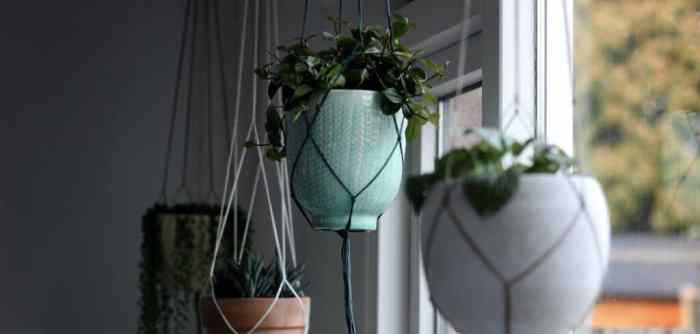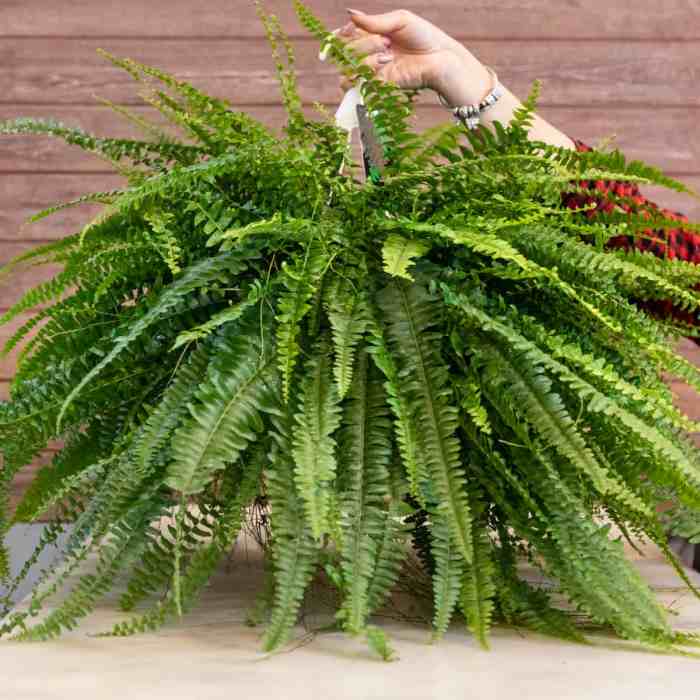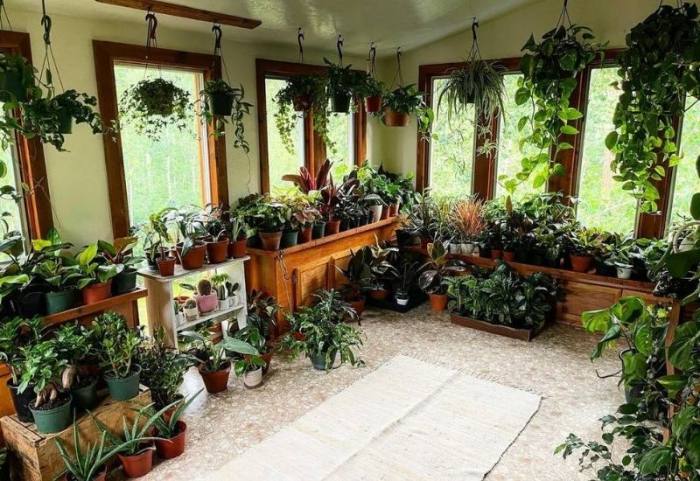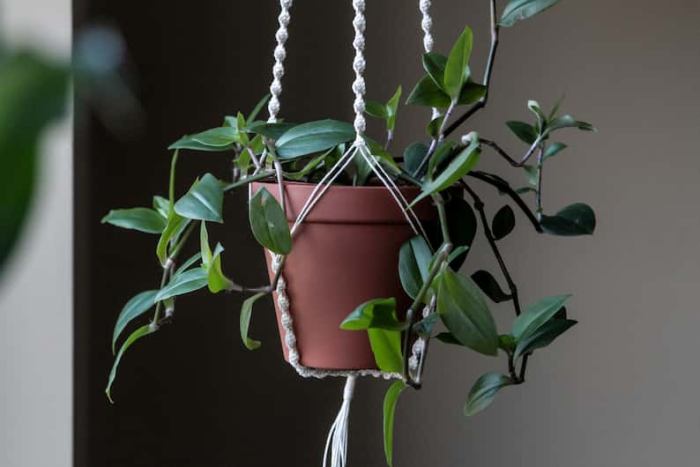Hanging plants with low light offer a unique and versatile way to enhance any indoor space. These plants thrive in dimly lit areas, adding a touch of greenery and freshness to rooms that may otherwise be difficult to decorate. From lush ferns to cascading vines, there’s a wide variety of low-light hanging plants to choose from, each with its own unique characteristics and benefits.
Not only do these plants bring aesthetic appeal, but they also help purify the air, removing harmful toxins and improving overall indoor air quality. Whether you’re a seasoned plant enthusiast or just starting out, hanging plants with low light are a great way to add life and vibrancy to your home or office.
Plant Options for Low Light Environments
Hanging plants are a fantastic way to add life and greenery to indoor spaces, even in areas with limited natural light. Here’s a list of some of the best hanging plants that can thrive in low-light conditions:
- Pothos (Epipremnum aureum):Pothos is a popular choice for low-light areas due to its hardiness and easy care. Its trailing vines and heart-shaped leaves add a touch of elegance to any room.
- Snake Plant (Sansevieria trifasciata):Snake plants are known for their upright, sword-like leaves and ability to tolerate extreme neglect. They’re also excellent air purifiers, removing toxins from the air.
- ZZ Plant (Zamioculcas zamiifolia):ZZ plants are another low-maintenance option with glossy, dark green leaves. They can withstand long periods of drought and low light levels.
- Spider Plant (Chlorophytum comosum):Spider plants are characterized by their long, arching leaves and trailing plantlets. They’re easy to propagate and can brighten up any corner of your home.
- Peace Lily (Spathiphyllum wallisii):Peace lilies are known for their large, glossy leaves and white flowers. They prefer indirect light and can tolerate lower light levels.
Selecting the Right Hanging Planters

When choosing hanging planters for low-light plants, consider the material, design, and size to complement the plant’s growth habit.
Materials and Designs
Hanging planters come in various materials such as ceramic, metal, plastic, and woven fibers. Ceramic planters provide breathability and moisture retention, while metal planters are durable and add a modern touch. Plastic planters are lightweight and affordable, and woven fiber planters offer a natural and bohemian aesthetic.
Size and Growth Habit
Select a planter that is proportionate to the plant’s size and growth habit. Smaller plants can thrive in 4-6 inch planters, while larger plants may require 8-12 inch or larger planters. Consider the plant’s root system and growth pattern to ensure adequate space for healthy growth.
If you’re looking for a low-maintenance way to add some greenery to your home, hanging plants are a great option. They’re easy to care for and can thrive in a variety of lighting conditions, including low light. For a wide selection of hanging basket plants, check out hanging basket plants bunnings . They have a variety of plants that are perfect for low-light conditions, so you’re sure to find the perfect one for your home.
Visual Interest
Hanging planters can also add visual interest to a room. Choose planters with intricate designs, patterns, or colors that complement the plant and the surrounding decor. Experiment with different shapes, such as teardrop, geometric, or macrame, to create a unique and eye-catching display.
Hanging and Care Techniques: Hanging Plants With Low Light

Maximizing the health and appearance of hanging plants requires proper placement, hanging techniques, and regular care. Understanding these aspects ensures optimal light exposure, stability, and longevity for your hanging greenery.
Optimal Placement
For low-light hanging plants, strategic placement is crucial. Position them near windows that receive indirect light, such as north-facing or east-facing windows. Avoid direct sunlight, as it can scorch delicate leaves. Utilize light-colored walls or curtains to reflect light onto the plants.
Hanging Methods
Hanging plants securely is essential for their safety and stability. Choose sturdy hooks or brackets that can support the weight of the plant and its container. Use appropriate hardware for the type of surface you’re hanging on, such as drywall anchors for plasterboard or heavy-duty screws for concrete walls.
Ensure the hanging mechanism is level to prevent the plant from tilting or falling.
Hanging plants with low light can add a touch of greenery to any room, and bunnings plastic hanging pots are a great way to display them. These pots are durable, easy to clean, and come in a variety of styles and sizes.
They are also a great way to save space, as they can be hung from the ceiling or a wall. When choosing hanging plants with low light, it is important to consider the amount of light that the plant will receive.
Some plants, such as snake plants and ZZ plants, can tolerate very low light levels, while others, such as peace lilies and ferns, need more light. It is also important to choose a pot that is the right size for the plant.
A pot that is too small will restrict the plant’s growth, while a pot that is too large will make the plant more susceptible to overwatering.
Watering and Fertilizing
Hanging plants require regular watering, especially during hot or dry periods. Check the soil moisture level by inserting your finger into the soil. Water thoroughly when the top inch of soil feels dry. Avoid overwatering, as it can lead to root rot.
For indoor spaces with limited natural light, hanging plants offer a practical and aesthetic solution. Hanging ivy bunnings are a popular choice, as they thrive in low-light conditions and can add a touch of greenery to any room. When selecting hanging plants for low-light areas, consider factors such as the amount of available light, the plant’s growth habit, and its water and nutrient requirements.
Use a balanced liquid fertilizer diluted to half strength once a month during the growing season to provide essential nutrients.
Pruning
Pruning hanging plants helps maintain their shape, encourage new growth, and remove dead or damaged leaves. Use sharp, clean pruning shears to make clean cuts. Remove any leggy or overgrown stems, and trim back any dead or discolored leaves. Pruning should be done regularly, especially during the spring and summer months when growth is most active.
Creating Vertical Gardens with Hanging Plants

Vertical gardening is a technique that utilizes vertical space to grow plants, creating lush and space-saving displays. It offers several benefits, including:
- Enhanced air quality
- Reduced stress levels
- Increased biodiversity
- Improved aesthetic appeal
Creating a Vertical Garden Using Hanging Plants
To create a vertical garden using hanging plants, follow these steps:
- Choose a suitable location with adequate light and ventilation.
- Select hanging planters with drainage holes.
- Fill the planters with a well-draining potting mix.
- Choose low-light tolerant plants, such as ferns, ivy, and pothos.
- Hang the planters at different heights to create a layered effect.
- Water the plants regularly and fertilize them according to their specific needs.
Aesthetic Considerations and Space-Saving Advantages
Vertical gardens offer a visually striking way to add greenery to indoor spaces. By suspending plants vertically, you can create a sense of height and depth, making small rooms appear larger. Additionally, vertical gardens are an excellent option for those with limited floor space, as they utilize vertical space without taking up valuable floor area.
Inspiring Examples and Case Studies
Hanging plants have become increasingly popular in interior design, transforming spaces with their lush greenery and aesthetic appeal. Numerous examples showcase their versatility and transformative effects in various settings.
Home Interiors, Hanging plants with low light
Hanging plants can instantly elevate the ambiance of homes. In living rooms, trailing plants like pothos or ivy add a touch of elegance and create a cozy atmosphere. In bedrooms, suspended terrariums or macrame hangers with air plants bring a serene and calming presence.
Kitchens benefit from hanging herbs, providing fresh greenery and a touch of practicality.
Office Spaces
Hanging plants have been found to improve air quality and boost productivity in offices. Large hanging baskets with ferns or philodendrons create a lush and inviting workspace. Vertical gardens with hanging planters add a touch of nature and help reduce noise levels, creating a more conducive work environment.
Public Spaces
In public spaces like malls, hotels, and restaurants, hanging plants create a welcoming and visually appealing atmosphere. Large-scale installations with cascading plants or intricate arrangements of hanging terrariums transform ceilings into living art. These installations not only enhance the aesthetics but also contribute to air purification and well-being.
Transformative Effects
Beyond their aesthetic appeal, hanging plants have a profound impact on well-being. Studies have shown that exposure to plants reduces stress, improves mood, and enhances cognitive function. The presence of greenery creates a sense of tranquility and connection with nature, fostering a more positive and inviting environment.
Epilogue

Incorporating hanging plants with low light into your indoor spaces is a simple yet effective way to transform the ambiance and create a more inviting and healthy environment. With proper care and attention, these plants will thrive and bring years of enjoyment, adding a touch of nature’s beauty to your everyday life.
FAQ Explained
What are the benefits of hanging plants with low light?
Hanging plants with low light offer several benefits, including adding greenery and freshness to dimly lit areas, purifying the air by removing toxins, and enhancing the overall ambiance of a room.
What are some popular types of hanging plants with low light?
Some popular types of hanging plants with low light include pothos, spider plants, philodendrons, and ferns.
How often should I water hanging plants with low light?
The watering frequency for hanging plants with low light will vary depending on the type of plant and the environment it’s in. Generally, these plants prefer to dry out slightly between waterings.